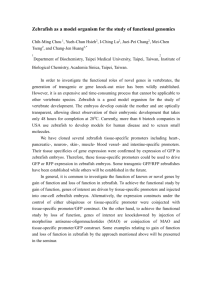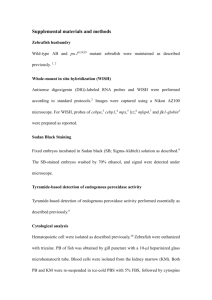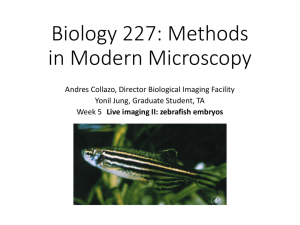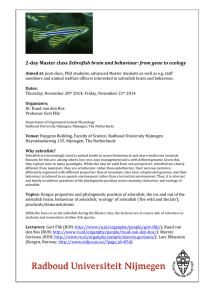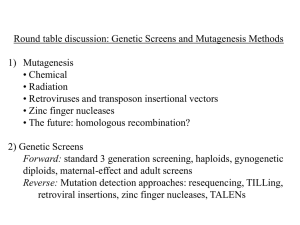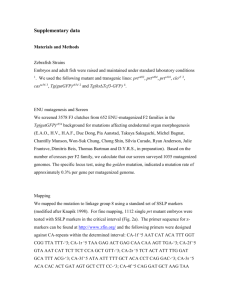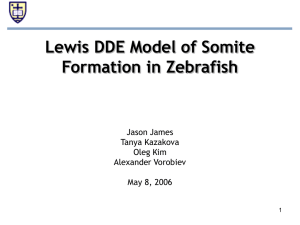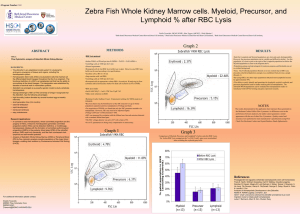Annotated Bibliography
advertisement
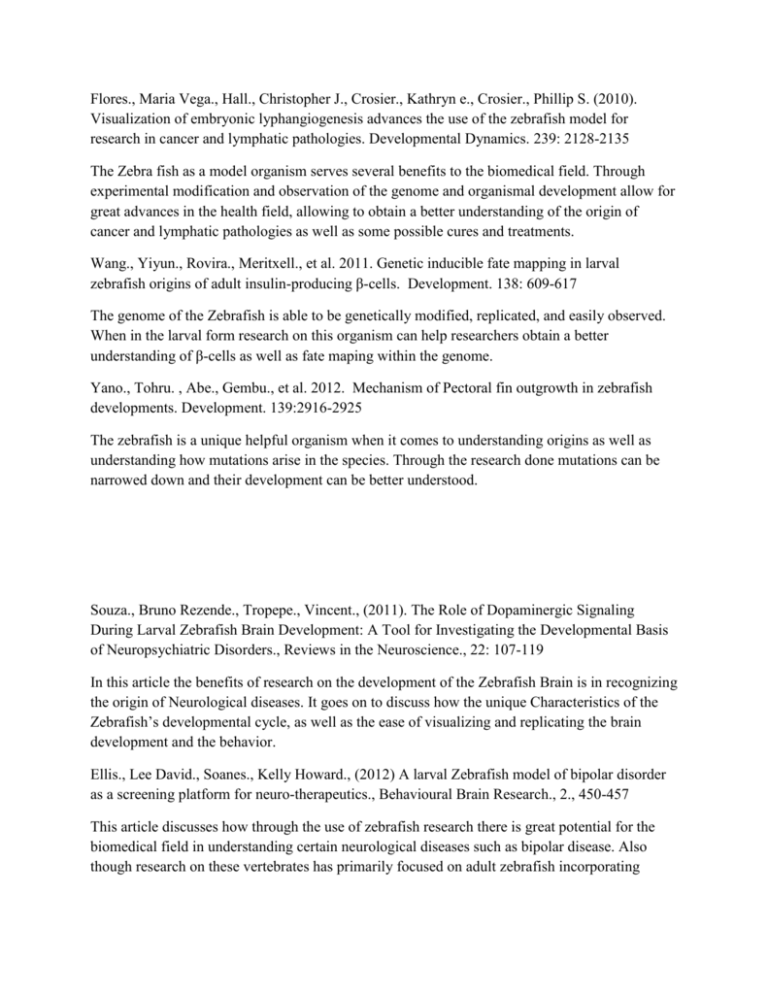
Flores., Maria Vega., Hall., Christopher J., Crosier., Kathryn e., Crosier., Phillip S. (2010). Visualization of embryonic lyphangiogenesis advances the use of the zebrafish model for research in cancer and lymphatic pathologies. Developmental Dynamics. 239: 2128-2135 The Zebra fish as a model organism serves several benefits to the biomedical field. Through experimental modification and observation of the genome and organismal development allow for great advances in the health field, allowing to obtain a better understanding of the origin of cancer and lymphatic pathologies as well as some possible cures and treatments. Wang., Yiyun., Rovira., Meritxell., et al. 2011. Genetic inducible fate mapping in larval zebrafish origins of adult insulin-producing β-cells. Development. 138: 609-617 The genome of the Zebrafish is able to be genetically modified, replicated, and easily observed. When in the larval form research on this organism can help researchers obtain a better understanding of β-cells as well as fate maping within the genome. Yano., Tohru. , Abe., Gembu., et al. 2012. Mechanism of Pectoral fin outgrowth in zebrafish developments. Development. 139:2916-2925 The zebrafish is a unique helpful organism when it comes to understanding origins as well as understanding how mutations arise in the species. Through the research done mutations can be narrowed down and their development can be better understood. Souza., Bruno Rezende., Tropepe., Vincent., (2011). The Role of Dopaminergic Signaling During Larval Zebrafish Brain Development: A Tool for Investigating the Developmental Basis of Neuropsychiatric Disorders., Reviews in the Neuroscience., 22: 107-119 In this article the benefits of research on the development of the Zebrafish Brain is in recognizing the origin of Neurological diseases. It goes on to discuss how the unique Characteristics of the Zebrafish’s developmental cycle, as well as the ease of visualizing and replicating the brain development and the behavior. Ellis., Lee David., Soanes., Kelly Howard., (2012) A larval Zebrafish model of bipolar disorder as a screening platform for neuro-therapeutics., Behavioural Brain Research., 2., 450-457 This article discusses how through the use of zebrafish research there is great potential for the biomedical field in understanding certain neurological diseases such as bipolar disease. Also though research on these vertebrates has primarily focused on adult zebrafish incorporating larval zebrafish can have a huge potential in discovering therapeutics that might prove useful to adults with these diseases. Lawson., Nathan D., Wolfe., Scot A. (2011). Forward and Reverse Genetic Approaches for the Analysis of Vertabrate Development in the Zebrafish. Developmental Cell. 21: 48-64 Forward and Reverse Genetic approaches are discussed in relation to the zebrafish genome. These approaches are unique when it comes to zebrafish because it is the only vertebrate that it is performed on. This technique allows isolation of mutant genes that will allow researchers to observe systematic Disections, as well as developmental processes. Weigt., Stefan., Huebler., Nicole., Strecker., Ruben., Braunbeck., Thomas., Broschard., Thomas H. (2011). Zebrafish (Danio rerio) embryos as a model for testing proteratogens. Toxicology. 281: 25-36 Through the study of embryos researchers have been able to obtain a good model for the detection of direct acting teratogens. This research will aid in the development of new therapeutic treatments and radiology.



